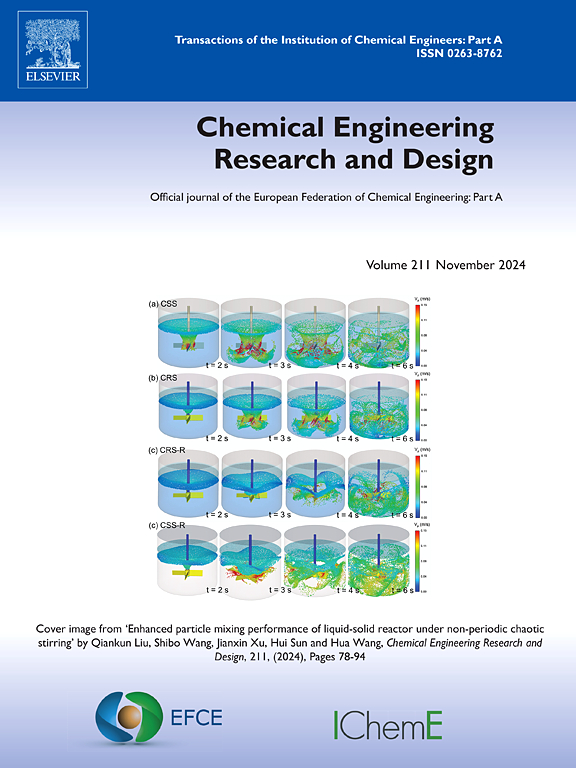Study of the ammonia oxidation process on platinum gauze and catalyst degradation phenomenon – CFD simulation with surface reaction kinetics and catalyst entrained particles motion and deposition tracking
IF 3.7
3区 工程技术
Q2 ENGINEERING, CHEMICAL
引用次数: 0
Abstract
This study is focused on the Computational Fluid Dynamics (CFD) simulation of the Ostwald process using implemented surface microkinetics of ammonia oxidation and applying this model to investigate the catalyst gauze’s degradation issue, a severe problem occurring due to the harsh process conditions. The results allow an in-depth investigation into the surface reaction rates or product selectivity and their gradients on the subsequent layers for a three-layer platinum woven gauze. The authors investigated the effects of critical parameters, such as contact time and gauze temperatures, on product efficiencies, concentrations and surface parameters. The simulation was validated using the experimental data from the literature. The obtained model was used to compute entrained particle trajectories, the efficiency of the recapture of the catalyst gauze’s subsequent layers and identify the spots of the platinum deposition for different catalyst gauze geometries, contact times and entrained particle sizes. Based on the results and literature reports, the authors estimated the spots of the increased platinum release. The discrete phase model (DPM) was used to track the motion of entrained particles, and the accretion model was used to locate the deposition areas. The obtained results agree with the experimentally observed deposition trends described in the literature.
氨氧化过程中铂纱布上催化剂降解现象的研究——基于表面反应动力学和催化剂携带颗粒运动与沉积跟踪的CFD模拟
本研究的重点是计算流体动力学(CFD)模拟奥斯特瓦尔德过程,利用实现的氨氧化表面微动力学,并应用该模型研究催化剂纱布的降解问题,这是由于苛刻的工艺条件而出现的一个严重问题。研究结果可以深入研究三层铂编织纱的表面反应速率或产物选择性及其在后续层上的梯度。作者研究了关键参数,如接触时间和纱布温度,对产品效率,浓度和表面参数的影响。利用文献中的实验数据对仿真结果进行了验证。该模型用于计算携带颗粒轨迹、催化剂纱网后续层的再捕获效率,并确定不同催化剂纱网几何形状、接触时间和携带颗粒尺寸下铂沉积的斑点。根据研究结果和文献报道,作者对铂释放增加的位点进行了估计。采用离散相模型(DPM)跟踪夹带颗粒的运动,采用吸积模型定位沉积区域。所得结果与文献中实验观察到的沉积趋势一致。
本文章由计算机程序翻译,如有差异,请以英文原文为准。
求助全文
约1分钟内获得全文
求助全文
来源期刊

Chemical Engineering Research & Design
工程技术-工程:化工
CiteScore
6.10
自引率
7.70%
发文量
623
审稿时长
42 days
期刊介绍:
ChERD aims to be the principal international journal for publication of high quality, original papers in chemical engineering.
Papers showing how research results can be used in chemical engineering design, and accounts of experimental or theoretical research work bringing new perspectives to established principles, highlighting unsolved problems or indicating directions for future research, are particularly welcome. Contributions that deal with new developments in plant or processes and that can be given quantitative expression are encouraged. The journal is especially interested in papers that extend the boundaries of traditional chemical engineering.
 求助内容:
求助内容: 应助结果提醒方式:
应助结果提醒方式:


